
 |
|
China is the birthplace of tea; in ancient times, the ancestors of today's Chinese people discovered tea plants and learned how to harvest and process the leaves to brew tea. As people continued to consume tea over a long period of time, the early tea industry was born. As Lu Yu (陸羽) said in his Tea Sutra (茶經): "Tea as a drink was first discovered by the legendary God of Farming, Shen Nong, as recorded by Duke Zhou of Lu."
According to historical records from before the Six Dynasties (220 - 589 CE), the earliest tea industry originated in Bashu, which is now modern-day Sichuan. During the Han (206 BCE - 0 CE), Wei (220 - 265 CE) and Six Dynasties, the tea industry had already attained a certain scale, and tea production in Sichuan continued to grow. Tea gradually spread toward the southeast and other areas, forming a largescale tea-producing region. Though industry began in Sichuan during this time, it had been cultivated and consumed from wild trees by local aboriginals since the early Neolithic period (ca. 10,000 BCE - 2,000 CE).
After several thousand years of development, it wasn't until the Tang Dynasty that China's tea industry really began to thrive. At that time, tea was being planted across a large area around Qinling and the Huai River, and the region was rapidly developing into what would form the beginnings of today's tea region. Many famous teas emerged and made a name for themselves; lively tea markets were everywhere and business was thriving. The business of buying and selling tea began to split off from rural tea production, and became an important part of society and the economy. The traditional tea-growing areas of Bashu enjoyed new prosperity, and the area of Jiangnan, encompassing several provinces south of the Changjiang (Yangtze) River, became an important center for growing and trading tea.
During the Tang Dynasty (618 - 907 CE), as tea became commercialized and trade with other areas increased, a large-scale tea market began to take shape across the whole of China, which in turn contributed to a development boom in important tea-producing areas. The mainstream was introduced to tea through the thriving Zen monasteries. In his Revised Records of Changmen Creek, Qimen County, Tang Dynasty writer Zhang Tu (張途) vividly describes the bustling scene of a tea merchant arriving in Qimen to buy tea: "More than 5,400 households live in the area; the village has many mountains and few fields; the waters are clear and the soil fertile. The mountains are planted all over from top to bottom with tea; for a thousand miles all around, almost everyone is employed in the business of tea. To feed and clothe themselves, to pay taxes, for all of this, the people rely on tea. Qimen tea is yellow and fragrant; the merchant haggles, asking unreasonable prices. Every year in February or March he comes bringing silver coins and silks to trade; the locals arrive and crowd around to eagerly examine the goods, rubbing shoulders and stepping in each other's footprints."
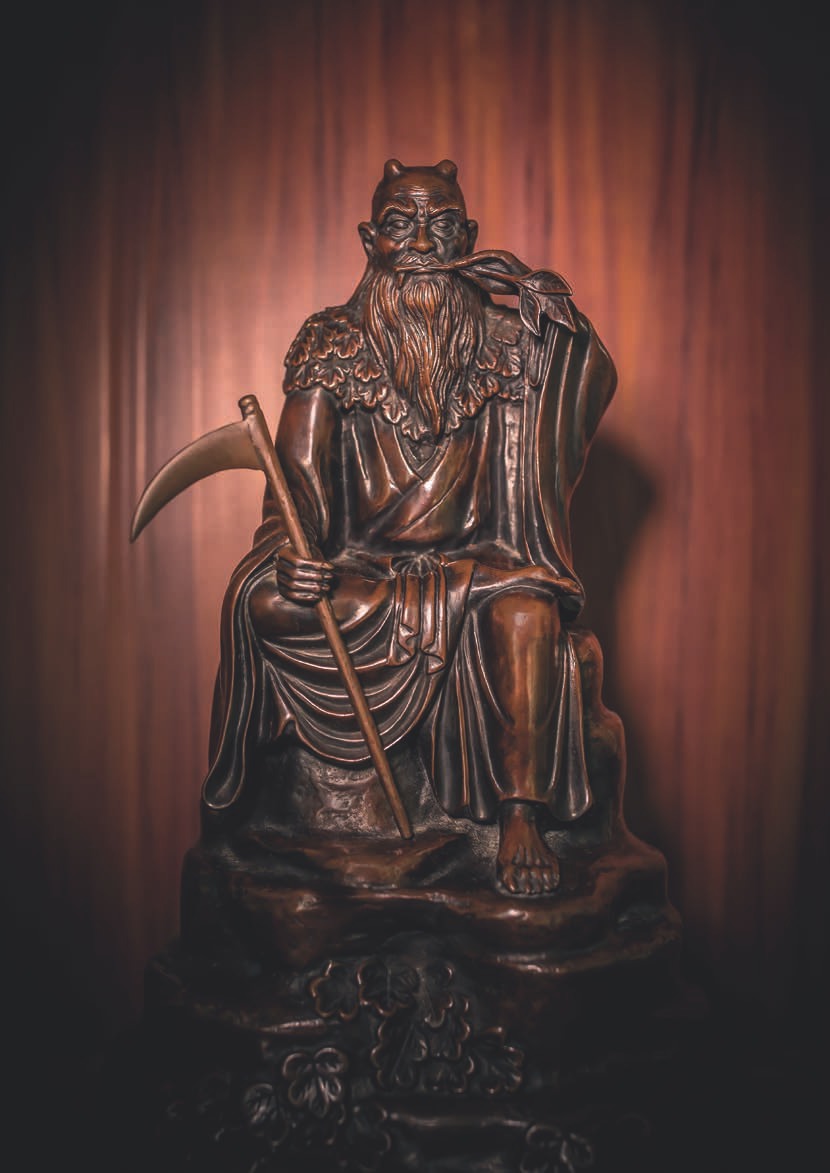
As tea trading increased throughout the Tang Dynasty, numerous tea distribution centers of all sizes sprang up; the most famous was at Fuliang. Fuliang has been immortalized by the famous Tang poet Bai Juyi (白居易) in his long poem Song of the Pipa Player (琵琶行), which contains the lines: "Merchants will gladly leave in search of a profit; last month they went to sell tea in Fuliang." Fuliang tea, described as "one hundred times more beneficial than Bashu (Sichuan) tea," was bought by merchants and ferried great distances along the Huai river, as far as northern China and Taiwan to the south. A saying from the time goes: "Tea from Fuliang in Shezhou is in demand across the world." During the Tang Dynasty, before Qimen had become an independent county, villages in the west and south of modern-day Qimen were a part of Fuliang.
In the Song Dynasty (960 - 1279 CE), the center of tea production shifted south, and the trend was to steam the tea leaves and shape them into balls and cakes. The finest example of the art of making tea cakes in the Song Dynasty was Jianzhou Beiyuan tribute tea cakes. In his Broad Treatise on Tea, the Song emperor Huizong wrote: "The dragon rounds and phoenix cakes of the yearly tea tribute from the Jian River area are famed throughout the land." The Song Dynasty was a critical period for the development of the tea economy in China, with production expanding rapidly and the art of preparation refining. A text of the time contains the following excerpt: "The care in harvesting, the craft of processing, the quality of grading, the subtle skill of cooking, all these contribute to the quality of the tea." The tea-growing region during the Song Dynasty encompassed areas such as Huainan, Zhejiang, Jiangnan, Jinghu, Fujian, Guangnan, the Chengdu Prefecture, Zizhou, Lizhou and Kuizhou.
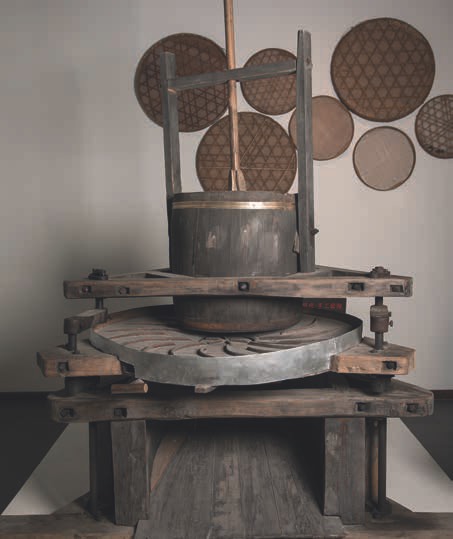
The Ming and Qing dynasties marked a period of innovation and development in Chinese tea-making techniques, and pan-fired green tea became very popular. Using this technique as a starting point, many new varieties emerged: yellow tea, black tea, white tea, red tea, and oolong tea. So, by this point, the "big six" basic types of tea had all emerged. Fujian's Wuyi tea and Yunnan's puerh enjoyed great popularity and became renowned both in China and abroad.
During the reign of Ming emperor Longqing, monks and scholars used pan-firing techniques from Suzhou, an area which at the time represented the height of skill in Chinese tea making, and added a refining process to that method, thus inventing Song Luo tea. Song Luo tea rapidly conquered the market with its superior quality, and instigated a widespread change in tea-processing methods from the previously favored steaming method to the new pan-firing technique. The Song Luo name became famous, and the name came to be used collectively for any tea produced in Huizhou; it was also frequently considered representative of green tea in general. In the 1870s, Qimen (or Keemun) red tea was first created. In 1915, at the Panama World Expo, Qimen red tea won the Gold Prize, cementing its reputation both in China and abroad.
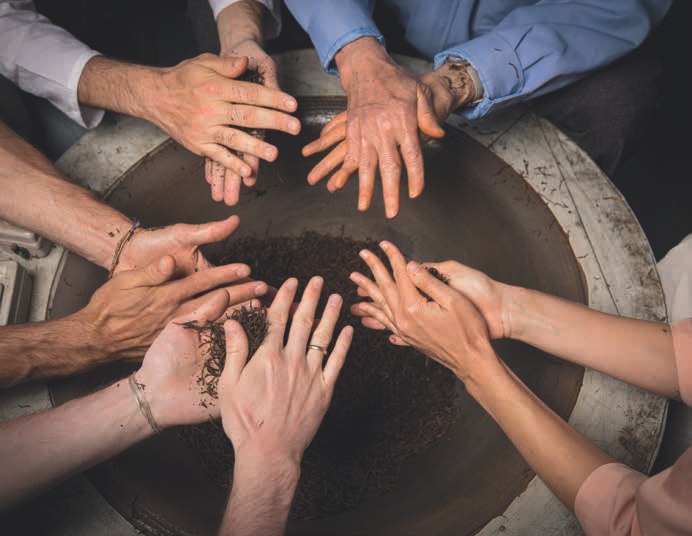
Prior to the Tang Dynasty, steaming the tea leaves was the most common processing method. Qimen tea has a long history, and was already well known by the Tang Dynasty. In those days, all the tea produced in Xiuning, Qimen and She counties was distributed via Fuliang. The Tang Dynasty Records of the Imperial Kitchen Director by Yang Hua (楊華) contains the following excerpt: "Tea from Shezhou, Wuzhou and Qimen is exceptionally fine; merchants admire it so much that they will travel a thousand miles to obtain it." From this, we can surmise that Qimen was already considered an important center for tea production in the Tang Dynasty. In Huizhou at that time, steaming the tea to shape it into balls or cakes was the most common method, while in Shezhou there are records of other types of tea products. Merchants traded goods for tea along their trading routes, until the tea reached the Changjiang (Yangtze) River and was transported to northern China. From there, tea would spread to the homes of commoners and nobles alike.
From the Ming Dynasty onward, the pan-firing method of tea processing became popular. The true rise of Huizhou tea came about after the invention of Song Luo tea in the Ming Dynasty. This method introduced the advanced Suzhou pan-firing technique, combining nature with skilled craft, and led to Huizhou tea gaining recognition among the world's top teas. As described in Ye Mengzhu's (葉夢珠) Writings about the World from the early Qing Dynasty, "Of all Huizhou's teas, Song Luo tea is the most famous; it is praised as the finest among all teas."
After its success in the market, Song Luo tea gradually began to spread throughout other tea-growing regions, including Hunan, Fujian, Zhejiang and Jiangsu. During the reign of Shunzhi, the second Qing emperor, an official by the name of Yin Yingyin (殷應寅) was serving as the county magistrate of Chong'an. He began recruiting monks from Huizhou's Huangshan to come to Chong'an and make tea using the Song Luo method. They also started packaging the tea in small tins, the same way that Song Luo tea was packaged in Huizhou.
The Song Luo production method involved pan-firing the tea leaves, and was superior to the earlier steaming method. As Song Luo spread throughout Fujian, Zhejiang, and other nearby areas, the pan-firing technique gradually replaced steaming. With the invention of Song Luo and the prevalence of this new technique, China saw a proliferation of new teas with distinct fragrances and flavors. People began to place a greater importance on the aroma of their tea, which in turn fueled the growing popularity of the new methods.
The emergence of Song Luo tea in the late Ming Dynasty spurred on the development of the tea industry in Anhui Province's Xiuning County. Tunxi District controlled the area where the Lu River flowed into the Heng River coming in from the north - this area provided the water source for both Xiuning and Yi counties, so it was of great importance to the tea plantations. Hence, Tunxi became a natural center for the tea produced in both Xiuning and Yi counties, and leaves were all transported there for the refining process.
Because all the green tea produced in southern Anhui passed through Tunxi for processing and export, Anhui green tea became known as "Tun green" (tun lü, 屯綠), and the name has continued to be used today. It's also sometimes known as "Mei Cha (眉茶)," or "Eyebrow Tea," after the shape of its leaves. Tun green first emerged in the Qing Dynasty during the consecutive reigns of the Jiaqing and Daoguang emperors, and was created based on the Song Luo tea refining method. Tun green was mainly produced in the four counties at the foot of Huangshan: Xiuning, Yi, She, and parts of Qimen such as Dongxiang. As early as the reign of the Qing emperor Guangxu, Tun green had gained some reputation within China, and was even being exported to Europe and North America.
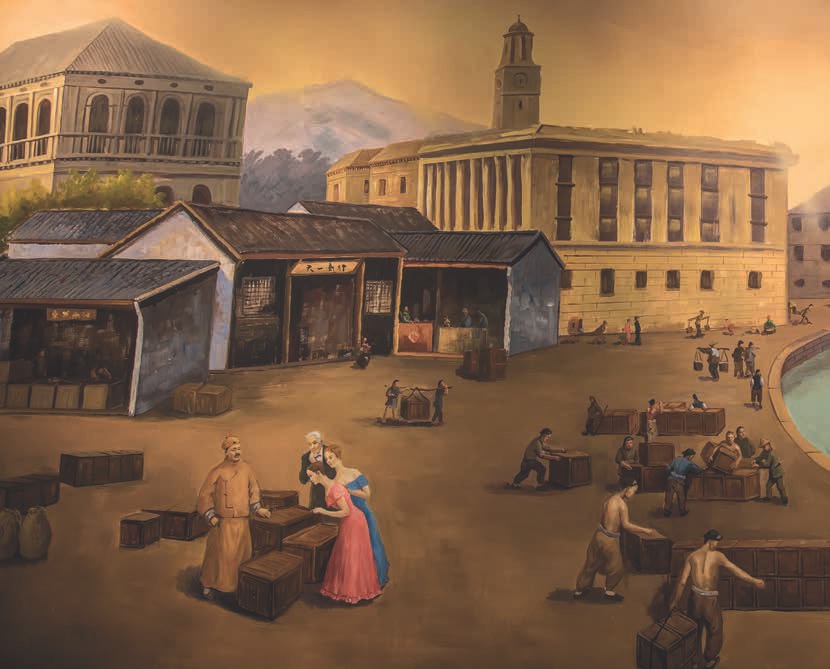
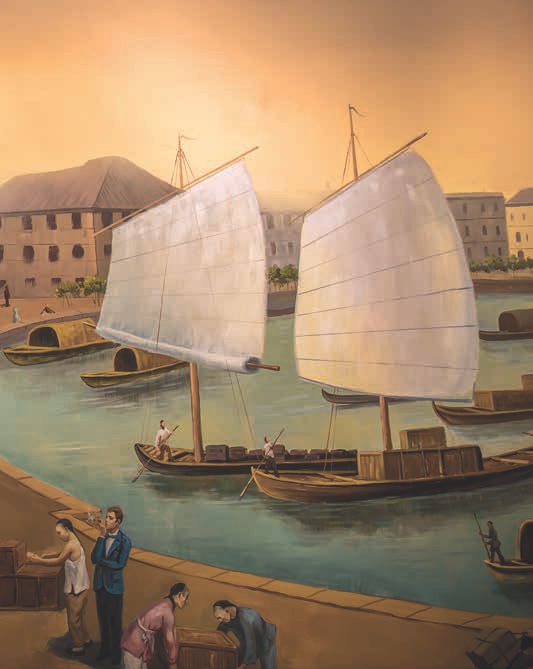
In the late Ming and early Qing dynasties came the advent of An tea. An tea is commonly known as "softstalk" tea, and is a style of black tea (in the Chinese sense). It undergoes two phases of processing: initial processing and refining. An tea is mainly produced in Luxi village in the southwest of Qimen, and in its heyday was also grown in parts of Pingli, Qihong and Zhukou villages. An tea has over two hundred years of history and enjoys a stellar reputation - it has even been praised with the name "Holy Tea." In his Overview of Anhui Tea History, Xu Zheng (許正) writes: "Prior to the reign of Qing emperor Guangxu, Qimen originally produced green tea for sale in Guangdong and Guangxi; it also produced a tea similar to Liu An that was called "An tea," which was very popular in Guangdong and the surrounding areas." The Qi and Chang Records, compiled during the reign of the Ming emperor Yongle, contain a reference to "soft-stalk" tea: "The tea generally has soft stalks and includes the buds; it enjoys quite a lot of support among the people." Soft-stalk tea was originally produced throughout Huizhou, but after it evolved into An tea, it was only produced in Qimen County. By 1932, the southern villages of Qimen were home to no less than 47 brands of An tea.
Prior to the reign of the Guangxu emperor, and before the appearance of Qimen red tea, An tea was produced over a large area of Qimen. As it was a good seller and a key export variety, it was produced in all four of the main tea-growing villages and was especially successful in the southwest. After Qimen red came on the scene, the An tea producing area shrank significantly and became concentrated around the southwestern villages of Luxi and Rongkou, especially near Dianbu Tan. Small-scale manufacturers could be found here and there in the villages of Pingli, Qihong and Zhukou, but there was no trace of An tea anywhere else.
In the late Qing Dynasty, during the reign of Emperor Guangxu, Qimen red tea was created. Up until then, Qimen had produced mainly green tea. Thanks to its outstanding manufacturing techniques and its lively fragrance reminiscent of fruit, flowers and honey, Qimen red was soon recognized as a bright new talent in the world of red teas. Along with India's Darjeeling and Sri Lanka's Ceylon Uva tea, it was named as one of the world's three most famous fragrant teas. (At that time, it was known in the English-speaking world as Keemun tea, which was an early anglicization of "Qimen.") At peak production around 1911, over three thousand tons of Qimen red tea were produced each year and the production area spilled over into neighboring regions. At the 1915 World Expo in Panama, Qimen red tea took home the main award as well as many other medals.
Qimen gongfu red tea, with its refined and complex manufacturing process, came to represent Chinese gongfu red teas as a whole. In 1980, Qimen red received a national award for excellence, and in 1983, it received a certificate of honor for quality in export goods. Qimen red tea's unique "Qimen fragrance" drifted all over the world, with the tea being exported to many countries and territories, including England, the Netherlands, Germany, Japan and Russia. For the last decade or so, it has also been the preferred ceremonial tea for state affairs in China.
Looking back on the history of Huizhou tea development over the period from the mid-Ming to the mid-Qing dynasties, it's clear that the pan-firing method of tea processing originating in Suzhou. This method a significant impact on the industry's development. We can also observe how these changing production techniques triggered economic progress in the region. The complexity and flexibility of the new technique allowed for the birth of myriad unique new teas, each with a flavor and fragrance all its own. And the competition that ensued served to further promote innovation. Another aspect of these changes can be seen during the late Ming and early Qing, where societal consumption began to drive economic development. The changing economy also led to the division of some of the traditional tea-growing areas, and thus a greater variance in quality among the tea leaves produced by different growers. This in turn meant that tea manufacturers were obliged to turn to complex refining methods to make up for this varying quality. This brought about a period of great innovation and progress in Huizhou's tea production methods.
A cup of tea, on its journey from plantation to teacup, must go through many stages. It's commonly said that a good cup of tea must be planted before it can be harvested or brewed. From the beginnings of tea in China, Qimen has held an important place in tea history. This is all thanks to the foundation created by Qimen's small tea manufacturers, each with unique local characteristics and a strong sense of terroir.
As a region of world-class small tea manufacturers, Qimen has maintained its reputation for over a thousand years. And what is the source of such long-lasting success? For starters, the heavens must have smiled on Qimen; how else could there exist such a perfect paradise for tea plants? All aspects of the local ecology, including sunlight, temperature, humidity, topography, altitude, PH level, nutrients and organisms, come together to create an environment that is wonderfully suited to growing tea.
The most noteworthy characteristic of Qimen's weather is summed up nicely in this saying: "When the weather is fine, mist covers the earth at dawn and dusk; when it's cloudy or rainy, the mountains are wreathed in a sea of clouds." Around 85% of Qimen's area is covered in forest - the terrain is traditionally described using the phrase: "nine mountains, half a river, and half a field." The region is renowned for having one of the richest ecologies in China. It's precisely this unique climate and ecology, as well as its excellent soil quality, that allows Qimen to distill the essence of mountains and forest; to gather the spirit of the clouds and mist; to absorb the vigor of the spring rains; to bathe in the sweet perfume of the mountain flowers. Add to these precious things a rich knowledge of the art of tea-making and a steady production base, and Qimen's tea makers have all the elements they need to bring their renowned teas into the world.
In China's tea-producing regions, one sometimes hears a reference to "China's golden triangle of tea production." This moniker refers to the area where the production of high-quality teas is most densely concentrated, and covers an area that includes the adjoining cities and districts of Huangshan in Anhui, Shangrao and Jingdezhen in Jiangxi, and Quzhou in Zhejiang. This area is home to many famous varieties of tea, including Huangshan Maofeng, Xiuning Song Luo, Tun Green, Taiping Houkui, Wuyuan Mingmei and Kaihua Longding. Qimen's tea-growing region is right in the middle of this "golden triangle" - one could say it's the nucleus of China's most outstanding tea region. If we compared China's famous tea regions to a string of pearls, then Qimen would certainly be one of the brightest and most lustrous of them all.
With fertile soils beneath it and a rich history behind it, the future of Qimen's tea industry is full of promise. Whichever aspect you choose to focus on, Qimen's tea has great value in terms of history, culture, production techniques and natural environment. These essential elements also provide the foundations for the future development of Qimen.
As for today's Qimen teas - whether we look at Qimen red tea, which has been through centuries of ups and downs and is now enjoying a revival, or An tea, which vanished for half a century only to re-emerge as a "new" tea, or the green tea that still makes up a significant proportion of tea output - the path of their future development will be inevitably linked to the ability to build a strong reputation for the Qimen small-scale tea production region as a whole. As tea lovers we always want to promote sustainability.
This is because, as we've seen from our overview of tea history in Qimen, different styles of tea will always emerge and their popularity will wax and wane with the changing times and market trends. An outstanding natural environment, on the other hand, will never change; the refined knowledge and skill of tea making can be passed down through the generations forever; and the rich history of tea culture in Qimen will not be forgotten.
So, in terms of the planting and management of the local tea plantations, the passing down of skills and the encouragement of innovation, it will be very important to protect the local environment, continually improve production and boost Qimen's reputation as an area that sets the standard for China's tea regions, in terms of both the tea companies and the individual tea varieties they produce. We must continue to build an appreciation for ancient Huizhou culture, history and art, to add to its profound depth and to ensure that our tea production is developed sustainably, preserving the local ecosystem. This will be the path to ensuring that Qimen's tea industry continues to thrive, now and in the future.
Let us all look forward to the continued evolution of Qimen's tea as it floats along down the river of a thousand years of history. Let us take delight in seeing the skill of generations, the rich local culture and the fertile natural environment manifest together in a flourishing tea garden that will carry its legacy forward into the future.

